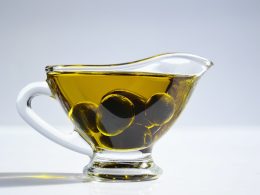Tasting food is not just about satisfying our hunger, it is also about experiencing the flavors, textures, and aromas of different ingredients. As foodies, we are always on the lookout for new and exciting flavors to tantalize our taste buds. In this article, we will explore the art of tasting and the ways in which we can elevate our palates with exquisite foods.
One of the key elements of the art of tasting is the ability to discern different flavors and textures. This means paying attention to the different tastes and sensations that we experience when we eat.
For example, when tasting a piece of chocolate, we may notice the sweetness, bitterness, and creaminess of the chocolate, as well as the texture and mouthfeel of the chocolate as it melts in our mouth.
Another important element of the art of tasting is the ability to appreciate the nuances of different ingredients. This means being able to distinguish between different types of spices, herbs, and seasonings, and understanding how they can be used to enhance the flavor of a dish.
For example, when tasting a dish that contains cumin, we may notice the warm and earthy flavor of the spice, and how it complements the other ingredients in the dish.
In addition to discerning different flavors and textures, the art of tasting also involves the ability to pair different foods and drinks together. This means understanding how different flavors and textures can complement or contrast with each other, and how they can be used to create a harmonious and balanced meal.
For example, when pairing a wine with a dish, we may consider the acidity, tannins, and sweetness of the wine, and how they can complement or contrast with the flavors of the dish.
One of the most exciting developments in the world of the art of tasting is the emphasis on using exquisite and high-quality ingredients. Exquisite foods are foods that are of the highest quality, with a focus on freshness, flavor, and texture.
For example, if you are tasting a piece of cheese, try exploring the flavors of artisanal cheeses that are made with high-quality milk and aged to perfection. These cheeses can have complex and nuanced flavors that are not found in mass-produced cheeses.
Similarly, if you are tasting a piece of chocolate, try exploring the flavors of single-origin chocolates that are made with high-quality cocoa beans and minimal processing. These chocolates can have unique and complex flavors that are not found in mass-produced chocolates.
In addition to exquisite foods, the art of tasting also involves the ability to appreciate the cultural and historical significance of different ingredients and dishes. This means understanding how different ingredients and dishes have evolved over time, and how they are used in different cultures and cuisines.
For example, when tasting a dish like sushi, we may consider the history and cultural significance of sushi in Japan, and how it has evolved over time to include different types of fish and ingredients.
Similarly, when tasting a dish like curry, we may consider the history and cultural significance of curry in India, and how it has evolved over time to include different types of spices and ingredients.
In conclusion, the art of tasting is a complex and nuanced skill that involves the ability to discern different flavors and textures, appreciate the nuances of different ingredients, pair different foods and drinks together, and appreciate the cultural and historical significance of different ingredients and dishes.
By using exquisite and high-quality ingredients, we can elevate our palates and experience the world of food in a whole new way. And by understanding the cultural and historical significance of different ingredients and dishes, we can deepen our appreciation for the diversity and richness of different cuisines and cultures.
So next time you’re tasting a dish or ingredient, take the time to appreciate the flavors, textures, and aromas, and consider the cultural and historical significance of what you are tasting. Your taste buds and your sense of appreciation for food will thank you.












